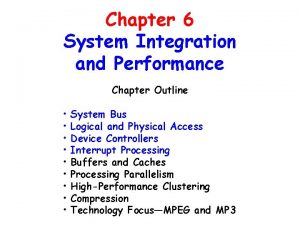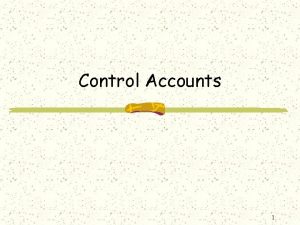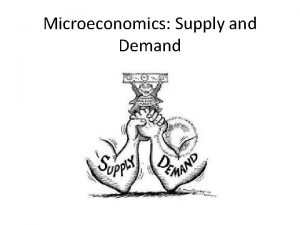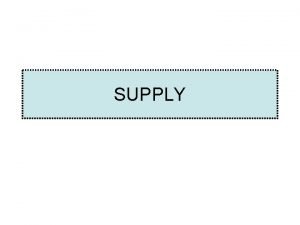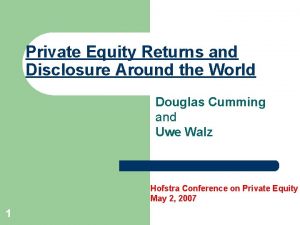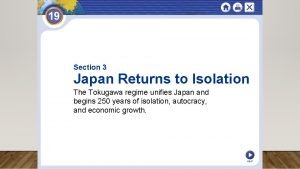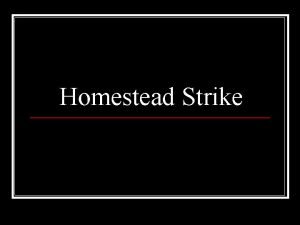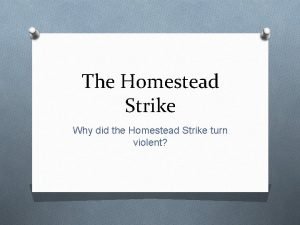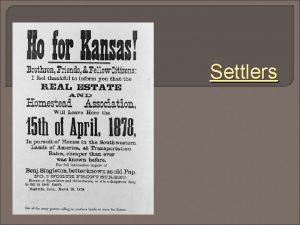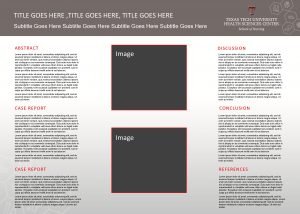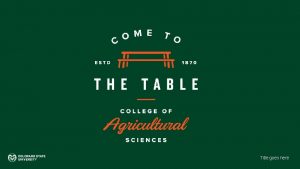Homestead Game Investment returns goes with Homestead ActFarming









- Slides: 9

Homestead Game Investment returns (goes with Homestead Act-Farming Game)

1885 • A serious lack of early spring rain in July almost destroyed the wheat, barley, and oat crop in central Nebraska. The prices paid for corn, beans, field peas, and tobacco are up because of draught east of the Mississippi. Cattle prices are depressed because of large herds of range stock being sold in Texas. The price for sheep is up and the price paid for horses is at an all time high.

1885 • • • • Crop Investment Return or multiply by Corn……………… 2 Beans……………. . 3 Wheat……………. . 1 Barley……………. 1 Oats……………… 1 Field Hay………… 2 Tobacco…………. 2 Field Peas………. . 2 Cattle……………. 1 Sheep……………. 2 Horses……………. . 3

1886 • The coldest winter in history with temperatures 60◦ below zero destroyed most of the cattle and hogs. Sheep prices are high. Abundant spring and summer rain throughout most of the state has produced excellent crops. The price of corn, wheat, barley, and oats, is good and the price of tobacco and field peas remains the same. The bean crop has produced a small yield because of late frost and the field hay prices are depressed because of limited demand for hay.

1886 • • • • Crop Investment Return or multiply by Corn……………… 2 Beans……………. . 1 Wheat……………. . 2 Barley……………. 2 Oats……………… 2 Field Hay………… 1 Tobacco…………. 2 Field Peas………. . 2 Cattle……………. 0 Sheep……………. 3 Horses……………. . 0

1887 • Nature deals a crushing blow to farmers in Nebraska. After a hot dry spring with little rain, a plague of grasshoppers infested the crops. Most crops are badly damaged. Cattle prices are very good, as the range herds have not yet recovered from the killing winter of ’ 86. Sheep prices are depressed but hog prices are good.

1887 • • • • Crop Investment Return or multiply by Corn……………… 1 Beans……………. . 1. 5 Wheat……………. . 2 Barley……………. 1. 5 Oats……………… 1 Field Hay………… 2 Tobacco…………. 1 Field Peas………. . 1 Cattle……………. 3 Sheep……………. 1 Hogs……………. . 2

1888 (extra) • Extended drought has destroyed the wheat entirely. However, corn manages to fare pretty well. The new railroad has driven up the demand for cattle so prices have gone up. A warm winter depressed the price of wool. Tobacco was destroyed by the tobacco horn worm.

1888 • • • Corn Beans Wheat Barley Oats Hay Tobacco Peas Cattle Sheep Hogs 2 2 0 1 1 1 0 1 4 1 2
 Fixed investment and inventory investment
Fixed investment and inventory investment Law of diminishing returns
Law of diminishing returns Io model strategic management
Io model strategic management Examples of control accounts
Examples of control accounts Rate of diminishing returns
Rate of diminishing returns An algorithm that returns near optimal solution is called
An algorithm that returns near optimal solution is called Stage of negative returns
Stage of negative returns Private equity returns and disclosure around the world
Private equity returns and disclosure around the world Japan returns to isolation
Japan returns to isolation Section 3 japan
Section 3 japan

